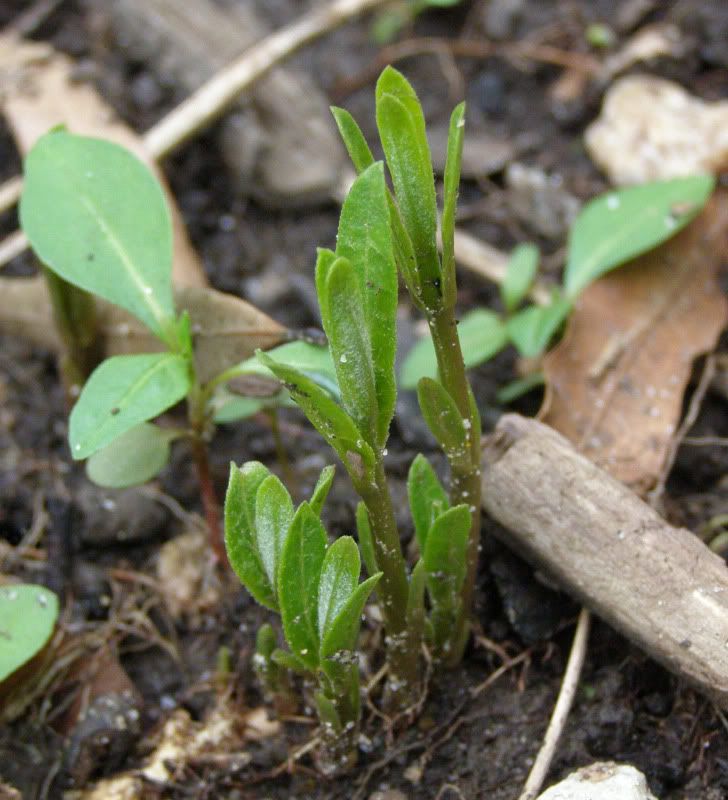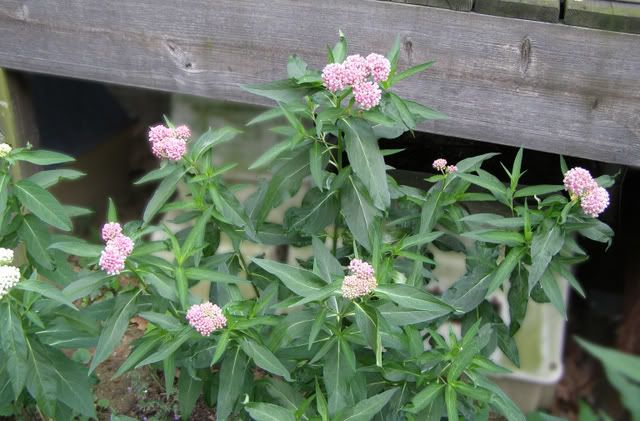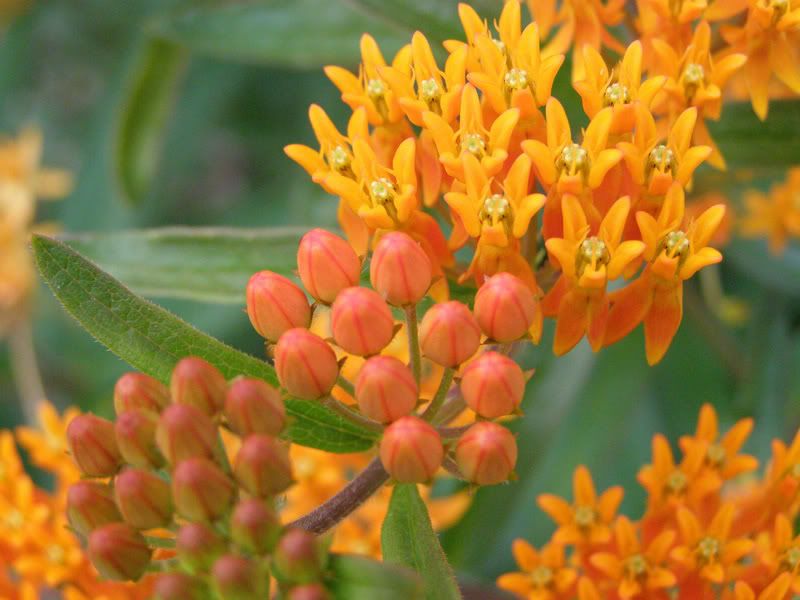
Asclepias, Milkweed, is a wonderful prairie plant. Early on it sure doesn't look like much but with following years it earns itself a place in any full sun garden.

Milkweeds don't flower until their second year. Plants don't emerge until a bit later that you might expect; late April or May. There are more stems and they're thicker this time around. As plants grow older they produce a few more shoots.

This is the primary host plant for the Monarch Butterfly, Danaus plexippus. They have a high success rate too compared with most host plants. If you have 3 to 5 milkweeds growing in the same spot in your garden you're almost garenteed to have caterpillars. The Tussock Moth also uses milkweed as it's host plant but is more common on older plants. In both cases I believe late summer is the time to see them.
Several other species also eat milkweeds but these are the most common.
Even with all these caterpillars nibbling on the leaves they rarely defoliate the plant into an unsightly nub. Leaves are eaten selectively and most caterpillars don't even eat whole leaves until they're 3 weeks old.

When milkweed's flower they very pretty. Asclepias incarnata, photoed above, has a nice candycain look going for it. Older plants produce lots more blooms. This species is also found in full white too. This species gets 3 to 5 feet tall.

Asclepias tuberosa has a very intense orange color. It's shorter than A. incarnata and tends to flower a bit more. Some varieties are offered in yellow, and red.
When buying these at the store you're likely to see a butterfly on the plant. And sure enough butterflies feed at the flowers, and as I've said, a few use them as their host plant. But what they don't tell you is that Bees Love Them! Lots and lots of bees come to the flowers from the time they bloom to the time they stop flowering.

After flowering the plant will go to seed. Seed pods sprout up and being to crack open releasing their seeds into the air. This is where another insect or two comes into play. Seed Beetles soon arrive, though not always and begin consuming the seeds form the inside out. This is also a reason to buy more than just one plant! The particular beetle here doesn't use pheromones, instead they all just meet up at milkweed plants. So if you have a single plant it might become mobbed with brightly colored, very noticeable beetles. The other pest with these plants is an orange aphid on the plant stem. However, they only show up after it's flowered and don't seem to effect the plants to much.